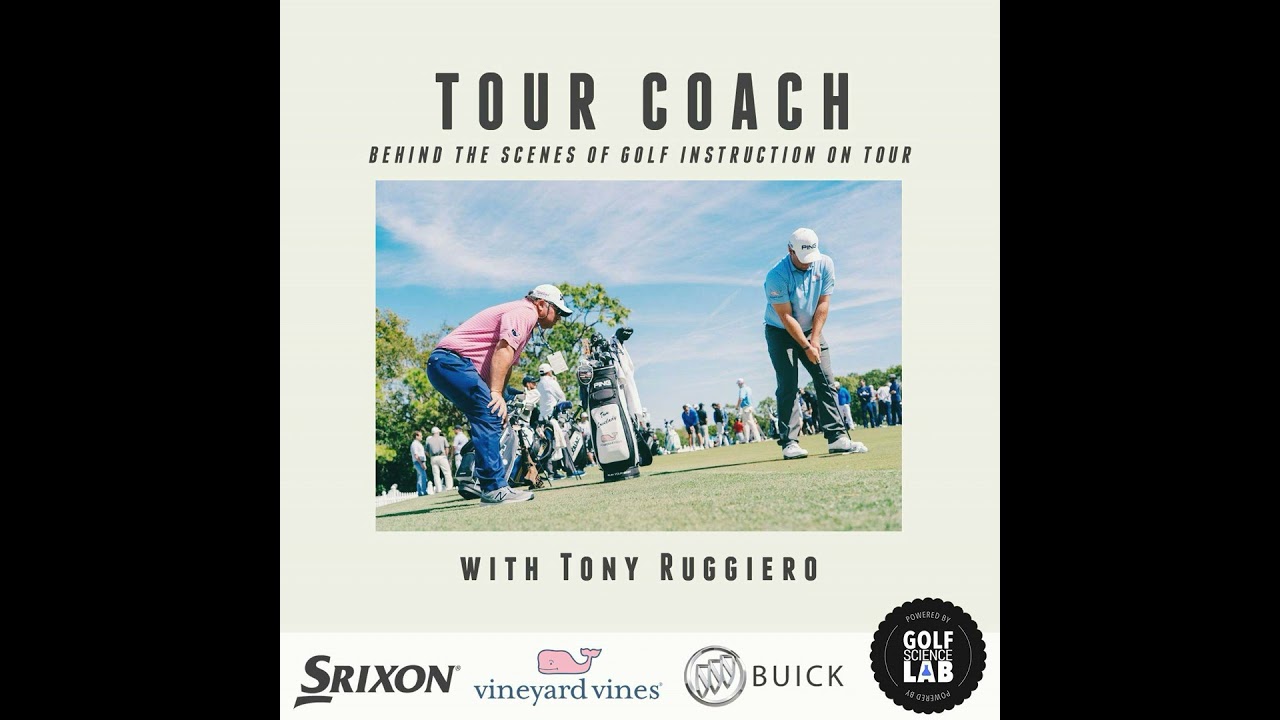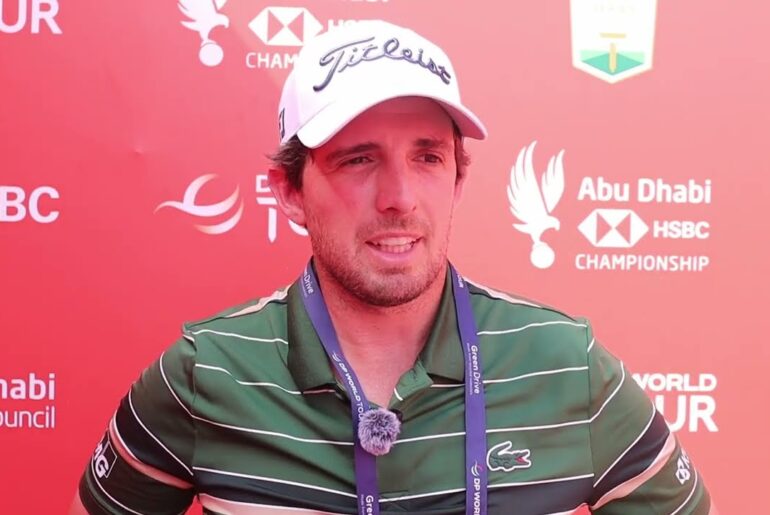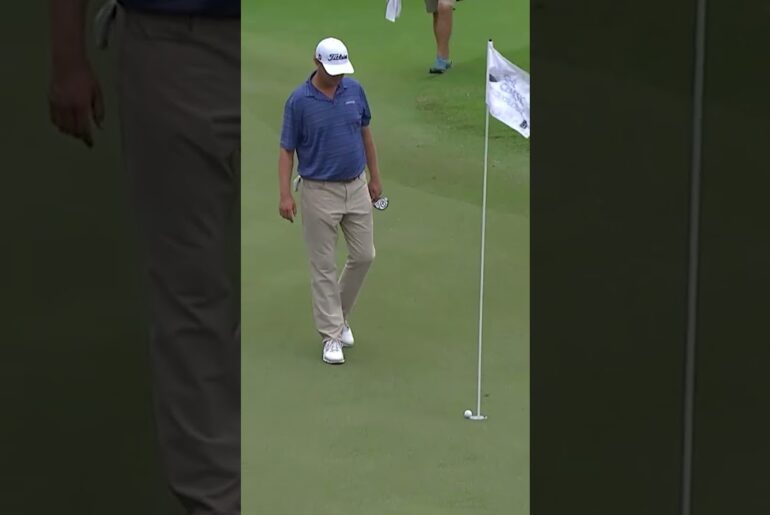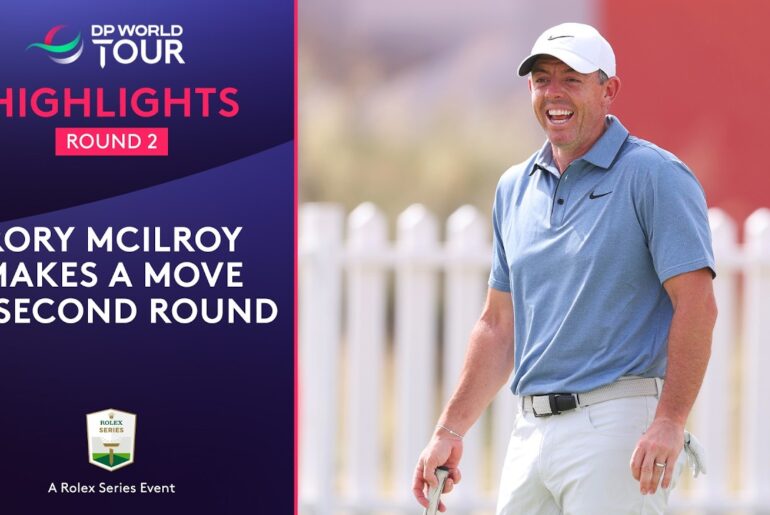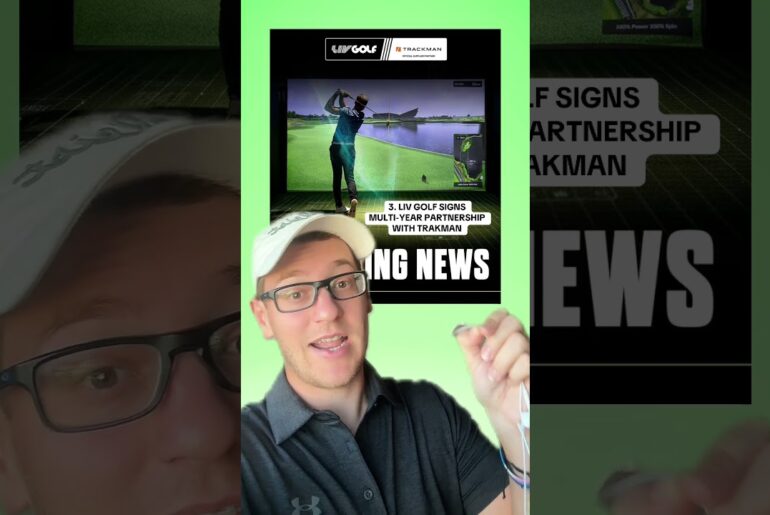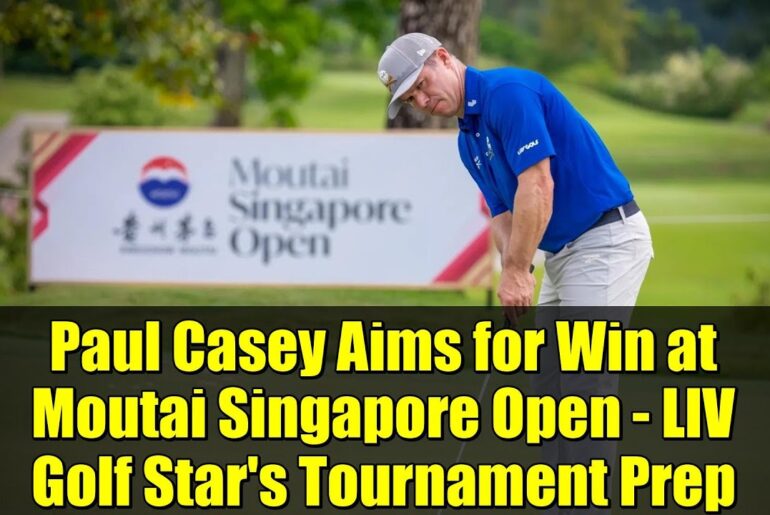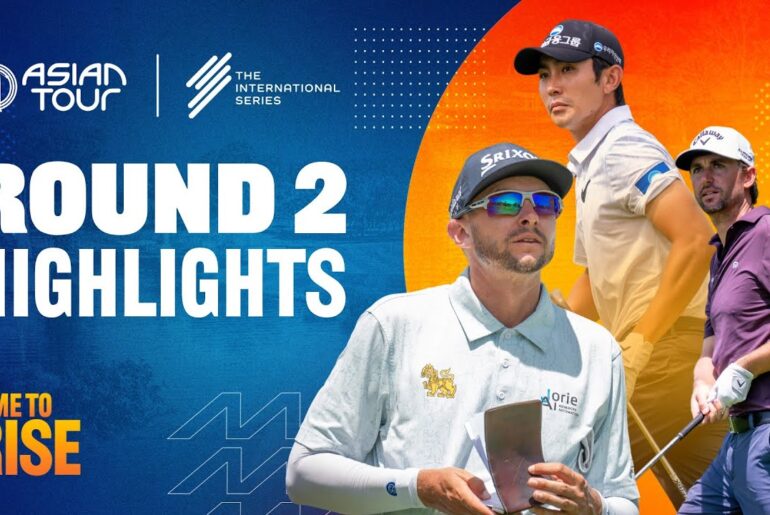Tony sits down with Richard Lee, to hear how he transitioned from playing on Tour to Coaching. He speaks candid about his biggest challenges post injury as a player, uncertainty of making the pivot to teaching and finding his unique way of communication and coaching.
Learn more about your ad choices. Visit megaphone.fm/adchoices (https://megaphone.fm/adchoices)
[Music] Hi, this is Tony Rogerro. Thanks for listening to the tour coach. These are the players, coaches, experts, stories, and insights from my work on the PGA tour at my retreats or my downtown teaching center in Mobile, Alabama. My goal is to shed light and share insights from the people who I’ve gotten to know and meet working on the PGA Tour and teach it through my career. And I hope this helps all of us play, coach, and teach better golf. If you like what you hear, please give us a good review and take a look at our new Deceer on Instagram where I’ve taken some time to share videos and help from my teachings, travels, and journeys. [Music] Hi, this is Tony Rogerro here, host of the Tour Coach Podcast. Thanks to our great sponsors, Shrixon Golf and Bushnell Golf, we’re working to help spread the word about the tour coach and get more people to download and get more people to listen to it. I have so many DMs every week from golfers, from teachers, just people that are passionate about the game of golf that love our authentic, our raw approach. It’s unproduced. It’s just natural. is from my travels teaching and working on the PGA tour, teaching at our retreats, just conversations with the very best in the world of golf. And we want more people to know about it. So, Shrian and Cleveland Golf and Bushnell and I have teamed up to give away some stuff. And here’s what you have to do to win and help spread the word about the tour coach. All you have to do is go on to Apple iTunes and give a review of the tour coach. Then screenshot it and then post it on Instagram or Twitter and tag Shrixan and Bushnell and myself at the Doweeper on Instagram ordersolf on Twitter. And what I’m going to do weekly is draw from those people that tag me on social media as well as Bushnell and Shrixan. and I’m going to do drawings for wingman’s due sweeper books, new Shrixign golf balls and wedges. We’re going to give away a ton of stuff each week over the next month. So spread the word about the tour coach, give a review, screenshot it, and post it on your social media channels and tag me at the DWESeeper and DWERGolf. And we’re going to be spreading the word and spreading the love and helping people play better golf. So sitting down here on the tour coach, little phone interview, been trying to coordinate this for a little bit, but he’s all he’s not only is he busy teaching, he’s busy traveling with family stuff. Richard Lee, former PGA Tour player. Richard, you played the PGA Tour for four or five years if I’m correct, right? Yep, that’s correct. I remember like 13, 14. I remember some of my first years out there when I went out there with Lee Williams some and then Smiley came on and everything like that. I remember you being out there and your name being out there when I was out there with Lee, but uh played the tour. You’ve transitioned now into coaching into teaching a lot of short game stuff. I know you’ve got a bunch of young professionals and you’re out there in Scottsdale. First, let’s just talk a little bit about your transition like what led you from playing to teaching and coaching and you know, how do you apply some of the stuff if you do that you learn play in the tour? Yeah. So Tony, I I turned pro. Uh played at University of Washington and turned pro. My first year was 2011 on the nationwide tour back then. Played one year there and then was lucky enough to get on the tour in 2012 was my rookie year and then played till 2014 and actually ended up having hand surgery end of 2014. It was just kind of a wear and tear injury on my thumb. So like my my trajectory path was kind of trending. I guess you could say that like 2012 I didn’t keep my card, but I went back to Q school, got my card. 2013 was probably my better years. I made it to the second playoff event. And then 2014, like in the summer, that’s when my thumbs really bother me. And then 2000, so I ended up getting on a medical. uh 2015 I played uh oddly enough I I qualified for the Chambers Bay US Open because that was my first warm-up event back and I’m like you know what it’s in my hometown let’s just give it a try and I ended up qualifying and I’m like well looks like I’m going to use one of my medical starts and beat up pretty bad uh at Chambers but that was a heck of an experience you know playing my hometown and then the 2016 was a tough year for me I had about 12 starts on my medical made one cut which was actually fourth place finish at Barbersaw you know but one cut out of 12 which was tough had a fourth place finish there and obviously wasn’t enough to keep my car going but then after that it was a bit of a struggle after my thumb injury coming back I um still had some pain left but also I had to make adjustments in my swing to you know to not have any pain and that really you know long story short I was a guy who had a really I was pretty like I had extended wrist coming down, you know, not a typical, not a modern golf swing, right? And that’s kind of what brought a lot of pressure into my thumb, but that’s just how I played. You know, my attack angle was down a couple and I I was a very straight driver of the ball. I was never long. Always had a good short game, but that was kind of my game. But after that, I I mean, I had no choice to try to experiment with trying to kind of turn my wrist down. Call it the bold way to kind of take some pressure off my thumb. But then, you know, as you know, that brought a whole, you know, misses and I was missing more left because that’s just not my style. My matchups didn’t match up, basically. It would be tough to change that, I think. And I think that’s one thing I’ve watched some other tour players out there from afar, right? It’s a struggle for people if that’s not how they played. Exactly. Exactly. And then as you know in in in tournament golf with the pressure and stuff like you got you’re always used to seeing a certain shot and you’re like hm is am I going to be able to hit this to this back left hand somehow and not worry about going left under the most pressure. And I I struggled then I after that I had to go back to I lost status. So I went back to Q school. Now it was the web.com Q school. Made it to final stage. Didn’t get my full status card. I missed it by two shots. As you know, conditional satisfactory didn’t get you any starts. So now I went down the that path of the Monday qualifying and kind of, you know, get into events. So that first year was when I had my first conditional status. So like six years into my professional career, I had probably had the worst status I ever had. So it was a new experience. And how did you handle that? You know, it was tough. I went 0 for 20 my first year in Mondays, as you know. And I and the hardest thing was that about that was I felt like I was playing pretty good. You know, usually five under, six under, but like these these wet Mondays are just ridiculously hard. Yeah. But I learned a lot from that experience because I realized, you know, my my mentality going to that first year as uh doing these Mondays, I was like, “Okay, fire at every flag, go as low as you can.” And sometimes I thought that was the right strategy, but obviously going 0 for 20 that didn’t work out. Yeah. So the following so that end of that year you know I played some local state opens and some to any events I can just stay sharp with went back to Q school went back to final stage I made it to final stage missed it by a couple strokes again so that was really tough and which I’m now I’m like man I went through all that I’m in the same boat but that that other year 2018 I actually Mondayed into four events so which was big improvement from the first trying as a Monday I Monday into Phoenix Open and the Riviera um TGA and then two other web events which kind of helped me get in events but it was still like you know those you get a call Tuesday or Wednesday your alternate oh your second alternate like it was just out of sorts. So that was my second year kind of doing the whole Monday route and then 2018 I go back to Q school make it all the way to final stage again and then I missed again. So I was like this was like this was like third third year of like okay so 2019 I’m like wow this is tough you know um I I have two kids two girls and uh if I’m if I’m being very transparent I blew through all my savings I mean like three years of doing Mondays and it’s hard it’s hard it is very expensive and you know now I got a family to support and so I you know I I had um 2019 it was my third year doing the Monday conditional status. Got into some events, got into US Open at Pebble that year. So like I had glimpse of moments where I’m like, you know what, I feel like my game is there and then I went back to Q school that year and this year like I missed out a second stage by like two shots. So then now I’m just kind of like, wow. That was probably the, if I’m being honest, probably the lowest point of my career in my opinion at that point because I was like, “Wow, this is I’m 10 years into my career and I literally have no status. I’m like, “Wow, this is uh, you know, I was fortunate enough to get out on the web tour or nationwide tour right out of college. Um, and I was lucky enough to do that and never really had the grind of the mini tours. But it was harder because having experienced the cornf tour, the PGA tour to going back to having no status 10 years into your career, that was really tough. And my kids were getting older and those three years of being Mondays, I mean, I missed out on a lot with my kids. And that was kind of the point where I’m like, “Wow, I don’t know if I can go another doing what I’ve been doing.” I was just mentally burnt out, emotionally burnt out. And literally in 2020, I was like, “You know what? Well, I got to start making money somehow.” So, it’s like, “What should I do?” And uh I had um so I’ve been part of the whole I don’t you know, Steve Ly, Phil Mickelson’s agent, I’ve been part of their agency my whole life. And at that time they owned a couple golf courses in the valley. And I just actually went to coach and I said, “Hey coach, I’m thinking about kind of taking a break and transitioning.” And I know obviously I knew Steve was coach is very connected in the area. And I was hoping that he could kind of just get me connected to somebody in their area where they can kind of get me a spot to kind of start teaching. And he and immediately within the first 10 minutes of sitting down, he’s like, “Hey, go to Mcdow Mountain Golf Course. We don’t, you know, just have at it basically.” So he was very generous of me help him to say go start and I was like okay and uh I just kind of started kind of brainstorming ideas and how to market myself and just kind of get my name out there. I started very slow. At first Tony I didn’t know if I’m I was going to love coaching or not or like it or hate it. I had no idea because all I’ve done was play golf my whole life. So I started kind of uh started teaching and had uh one junior player when I first started. His name is Davis. now he’s playing in uh University of Utah and uh had a couple just kind of random people that saw me on Instagram and I had like probably like 200 followers on Instagram so it’s not like I had a big following um so I was like all right I’m going to start and um and Tony that’s kind of how I organically started like I had like first month of teaching I probably had like 10 lessons right like and then just kind of like slowly and I’m start to kind of learn the ins and outs of coaching ways of communicating, you know, delivering a message. And when I was a player, Tony, like I had a lot of I mean, I still have I had a lot of great mentors, you know, like my childhood coach who brought me to the tour. He’s about in his 70s. His name’s Joe Teal. He’s a legend in the Washington area. And I was lucky enough to be around James Beman, Scott Hamilton, Chris Como, like all those guys like them. I mean, I’ve I’ve been able to variety of coaching and kind of been able to learn from what the best do and also kind of take what they share and kind of approach um and uh kind of learn their ways and kind of make it my own and try to share the message that you know golf swing whether short game, long game, putting, chipping, like there’s not like one way to do it and there’s just learning kind of what the player needs at the time and trying to do my best to kind of give them that approach. So, but yeah, that’s kind of how it led me to go into coaching when this is my little I’ve been doing it a little over two years now and there are and I’m I’m going to be honest, there are times, Tony, where I’m like, coaching is not as exciting. Um, and then there are times, man, co coaching is great, you know? So, it’s like I’m learning that whatever you’re into, whatever you do, whatever you’re passionate about, there are things that you may not like, but I’m just trying to do my best and learn as I go. And, uh, it’s been a journey. And it’s been a journey that allowed me to, you know, be with my kids more. And as I’m talking to you now, Tony, I’m in Florida following my uh, 15-year-old daughter’s soccer tournament. And, uh, you know, Tony, what’s really funny, yesterday, my daughter’s team actually played against Tiger Woods daughter’s team. and Tiger was there on the sidelines yesterday. So, it was kind of like kind of a cool deal. And I actually got to play with Tiger in 2013, my Deutsche Bank championship. So, I mean, I kind of walked up to him. I was like, “Hey, Tiger, remember me?” And I was like, “He definitely doesn’t remember me.” Um, but I said hi. And he was like, “Hey, my daughter’s playing against your team.” So, it was kind of cool. But it was nice to see that he was out here being like any other soccer dad, right? Sitting on the sidelines. There was no security. There was security in the beginning, but once the game started, he was just sitting with the other dads and I thought that was a cool moment. But I think that’s super cool. One of the things you said that I really liked was you said like, you know, you talked about basically, you know, you’ve seen all these guys that are really good at what they do, you know, from Seatman to Hamilton to Como and but you know, you trying to make it yourself, you know, your your own stuff. And I I’ve been through that as a coach and I’ve talked about it openly on this. I think sometimes like you go through down periods and uh like we’re always going to have down periods teaching and coaching. You know, it’s life, right? I mean, it isn’t always on the upswing. And and I found that sometimes like, you know, there’s pressure to like start trying to do what other people that you view as being successful are doing, but it doesn’t work if it’s not you. You got to be authentic. You got to you got to be yourself, and you got to figure out what’s your best way to help make people better, right? Yeah. I 100% agree. And I think that’s the part that I’m trying to, you know, as I am growing as a a golf coach. It’s weird for me to say that still. Um, yeah. But it it it’s kind of like everyone has their way of communicating and everyone has because I’m me and you’re you and someone else is someone else, right? We all have who we are as a DNA. Like looking as a golfer, we have our DNA as a golfer. And I think as a coach, I have a DNA as a coach. And I forgot who told me this, but he said, “You’re not going to be the right coach for everybody, and you’re you’re going to have players come and see you and leave, and you’re going to have players that come and stay with you.” And I I and I’m I’m trying to really take that to heart. And I generally try my best to like invest and care for the player. And ultimately like because I was in their shoe before, I always try to have this like open door policy where it’s like, “Hey, please be open with me as much as you can and if things are not working, please tell me.” And you’re never going to hurt my feelings if you say, “Hey, I want to go to a different route.” Because I mean, I’ve been in their shoe. I know what it’s like. And so it’s like I’m I try my best to give them that kind of freedom in a weird way, if that makes sense. um to say and I think that’s kind of I haven’t had any kind of weird call it breakups or whatnot but you know I just try to kind of have that open approach where hey if he wants to go see somebody else all I say is hey I want you to succeed at what you do and if I can help you great if someone else can help you that’s great. So that’s kind of kind of how I’m trying to approach the I guess the business relationship side of coaching, which is still all new to me, you know. Yeah. No, it’s it’s different. And it and it’s different. Well, you I’m going to pick your brain on a couple things. One, I always like to hear you say you’ve been around these great teachers and folks that have had just tons of success. What type of nuggets or what were things that you took from being around the Scott Hamiltons and the Chris Komas and the Jane Seekmans? And obviously I know all three of those guys pretty well and uh have coached you know some players with Seekman and you know what are some nuggets that you’ve taken from them that you like that have helped you as you’ve gone along this journey? Yeah with James he’s the first coach or short game coach that I worked with for a few years and he helped me open my eyes to like the difference between block practice and skill practice real practice. So like he always said if we’re working on technique, you’re only allowed to work on technique during your block session. So you can have your alignment sticks out, you could have any tools you want to use, a setup grid or whatever. You are allowed to think about what you’re trying to do technically. Yeah. And but he said do not let that take that time block practice time take so long. He he always mentions like do it for 20 minutes max or 10 minutes a day like little by little every day. And I really took that to heart as a player and I took that to heart as a coach because if you can do those little things daily, it’s almost like putting deposit in the bank every day, right? So you’re like, I’m going to put $20 in today, $20 in today, that allows you to go work on the skill stuff, which is this I call it the bridge between practice and play. Like um and it’s like that I really took that to heart and I actually really apply that to my students as well. It’s like, okay, if we’re working on this, let’s say you guys do this for 20 balls. And I know you do this as well, Tony, where you talk about ball counts. And I’m a big fan of that. And like say, do this for 20. Make it intentional. Really think about what you’re doing. Once you’re done, you’re done. Put your sticks away, put your smart ball away, or whatever you’re working on away. And now, let’s get into lie reading, screen reading, or situational base. Let’s create a boundary where you could you’re starting to simulate the golf course or let’s just go out on the golf course and practice you know and with Scott Hamilton uh he is like the best redneck coach I’ve been around like you know I’m sure you know pro like he you know he keeps it super simple and I really like that approach and he is very like all right do this or it’s like oh pro I feel like I’m getting under he goes well down on it all right awesome you know like very like simple approach coach, but it makes sense. You know, I’ve really enjoyed like with pro like he always kept it so simple that I really enjoyed that and knowing with the best player, whether it’s a best player or an amateur player. I think sometimes I can get catch myself trying to explain things almost too much where that’s when like Hamilton’s approach comes in. He goes, you know what? Let’s just tell the student to just like hit down on it or hit it to the right field. something where if they’re being bombarded with thoughts, let’s kind of take that approach and say, you know what, do this for a little bit and then let’s see how your body reacts to that. And then with Komo, as you know, Como, he’s a s smart guy. Um Oh, yeah. And and uh and Ko and I still talk a lot. He’s become a really good friend of mine. I love how he he is a critical thinker of everything in a way where doesn’t mean he has to keep things like super like crazy complicated or simple like he’s almost like the opposite of pro right like can’t be as simple as pro but he can Chris is always willing to ask a tough question man this player does this why ask yourself why is this work why does that not work and kind of help me like almost have like a uh 360 overview picture of someone’s swing. That doesn’t mean that I’m going to say, “Hey, uh, you have to do blah blah blah blah blah to hit the shot.” But it just helps me kind of ask the hard questions, say, “Man, why does this swing this swing look this way, but this is he’s really hitting the shots he needs to hit?” So, like, but how is that why is that working out? You know what I mean? So, it’s like I feel like he’s been able to kind of help me open my eyes to the other spectrum of the golf swinger, kind of understanding their body, kind of understanding the he’s the one I really open my eyes to matchups. He always use the word matchups like this needs to match with that, that needs to match with that, and that’s why this works, and that’s why this could work, but doesn’t work because this is the missing piece of the puzzle. So, those are the little things that I would say. And one other, you know, coach I forgot to mention is Jamie Mulligan. I’m sure you know Jamie as well, who’s another another legend. Um, um, and he is is very he’s kind of like pro, too, where he’s got but he’s like the southern, you know, the Southern California Scott Hamilton. He’s got the cool vah, you know, the nice sunglasses and the hat and he keeps this really really like chill. And gosh, he he’s also taught me like the simplicity and saying the right thing helped me realize when you say one thing at the right time, that has a lot of weight versus you saying 10 things at the wrong time, if that makes sense. Oh, that’s hard to coach and teach them. Exactly. Right. And I’ve I’ve um and Jamie’s helped me with my swing. He’s been very generous with this. I’ll shoot him some of my swings here and there and he’s always like leaves me these audio messages. He’s like, “All right, man. That looks good. Keep doing it.” I’m like, “Cool.” You know, like it’s but like like just like you said, art of coaching. Like it’s just he’s really helped me with that. So, I mean, I have a lot to learn. But just seeing being around these great coaches and players too, it’s like it’s giving me a nice uh outlook into what coaching could be like and how it works really. Um, and as you know, golf is such a complicated sport. It’s kind of nice to have all these lenses from different angles and you know, different parts of the country. You got Southern California, you got Carterville, Atlanta, and you got, you know, it’s just like melting pot of people and just trying to kind of see and experience every aspect. So that’s it’s been cool too and all of these guys have been so generous with their time and generous with their knowledge and that’s what I like about coaching now Tony is that I feel like if I reach out to anybody I have not had one coach say no I don’t want to share any information with you no I don’t want to talk to you like everyone like John Graham’s another one he’s been gen it’s just like they’re so like willing to share um as long as you’re willing to ask the questions I feel like everyone is going to be like yeah man that’s a Great question. Um, this is what I think about this. So, that’s been cool and I I think that’s kind of where golf is headed and I think that’s that’s how it should be. There’s no like such thing as ownership of a player. I really hope so. I you know, I’ve used obviously the team approach because I’ve always felt that if you get like I know I don’t have all the answers and uh you know, I’ve never thought of myself to be honest like it’s like I’m that super smart on it, right? Like I know I work hard and I’ve had some guys get good, but I’ve always tried to I’ve always felt like if if you’re the dumbest guy in the room and you surround yourself with people that are great at what they do and everybody stays in their lane, you got the opportunity to expose a student to some great stuff and really help them, you know, and uh it would be it would be nice to see our profession keep going in that way instead of, you know, people that think they got all the answers and that if you don’t do it their way, you’re an idiot. You know, that’s the stuff that drives me crazy as I get older in this profession, you know? Right. One other thing I wanted to pick your brain on is most of the short game stuff that I’ve learned coaching and teaching, I’ve really learned from watching other great players. Like the stuff I learned coming up was good and it probably helped recreational golfers some and and so forth. But like just being out there, I mean, even, you know, like guys like Lucas Glover and how he would chip it and how good his hands were and Miley Kaufman had a great short game and I watched him and Seekman work a bunch and, you know, different guys. Bill Hos was amazing out of a bunker. Like it was phenomenal to watch him and pick his brain on that. So I’ve always gotten stuff from about short game from guys I’ve fought. Curious about your thoughts on the short game, some of the things that you think are important. I thought I just would love to pick your brain on that for a few minutes. Yeah. So, obviously I had a little bit of James Sikman’s influence, but also another guy that has an influence is Jeff Pierce. I’m sure you know Jeff. Yeah. Another great short game instructor. And, you know, I was able to kind of blend a little bit of, you know, kind of what James what his philosophies were and what uh Jeff’s philosophies were. And couple of the main things that I really focus on in short game is I believe that there are different types of uh the the wide arc players like the Jason Days, the Steve Shers of the world, and you got like the narrow arc players maybe like uh John Rom or Sergio or I mean they can all play different sorts of shots, but like I love to kind of try to kind of keep the low point in front of the ball. And I’m a big setup guy. So like I I believe that if you can set up the right way, I feel like your chance of hitting a good shot exponentially grows. And for me, biggest thing for me in the short game is kind of learning where the low point is. Can we set up our body in a way where we can deliver the loft? And when I talk about delivering the loft, like obviously there are types of shots where you need shaft lean and you need some angle, but uh at the same time if we can deliver the loft, I mean keep the loft in the face and keep the shaft angle kind of where it starts. That’s kind of what I like to kind of coach players to. Obviously with the better players, I feel like short game is very situational based, lie based, kind of what’s in front of you. But if everything is being equal, like you got, you know, some green to work with, you got a good lie. If you’re ever in that situation, I like a player to have minimal shaft lean kind of body like upper body stacked right on top of the lower body. Um, pretty level everything and just try to keep it as simple as I can by just keeping the loft on plane. So, I mean, obviously it’s easier said than done, but like that’s kind of the the approach that I believe in and obviously using the bounce, but I think having the right setup allows you to use the bounce the correct way. So, I really try to kind of keep everything setup based. Once the setup is right, I feel I can get any player to kind of obviously with some repetition get them in the right positions to hit the right shot if that makes sense. Oh, absolutely. Absolutely. That’s what I followed. you know, I’ve followed you on Instagram and we just watched some of your stuff and you know, I just love the setup stuff because I think in the even transitions even into the full swing. I think you know, I see a lot of folks trying to make moves at a golf ball or hit shots that there’s just no way in hell they’re set up to be able to do it, you know, right? And and and I and I taught a junior yesterday at Dorado. It was heck, I mean, kid’s a super kid, good young player, ninth grade. I mean, just setup wasn’t very good and you know, he’s hitting a bunch of funky shots and he thinks something’s he’s talking about his path and his face and hell, all we did was get his hips underneath him and get his get the ball in the right spot and ball started going where it was supposed to. And I think people sometimes are in a hurry to jump past the setup to get to something else in the golf swing when you can affect a bunch of change with setup. Yeah, absolutely. I think I’ve done that myself too, Tony. Sometimes it’s like, you know, you can look at a player and be like, h, something doesn’t look right or just doesn’t look athletic or and I’m like, “Okay, let’s do this.” And and it’s amazing when they get them in the right setup. It’s like, “Wow, that ball acted differently.” And I or they sometimes they’ll say, “Wow, I felt like my body was balanced.” Sometimes it sounds so simple, but especially with the better players, I feel like those have the biggest influence. And it’s a it’s sometimes it’s silly to think, but like you said, sometimes it’s like it’s what you need to look at. You don’t have to talk about swing plane, ball position, or your ball position or swing plane, everything got off because your setup was off. Now, let’s just work on that and get you back on track. You’re 100%. This has been awesome, Rich. I’ve really enjoyed I’ve one I’ve enjoyed following you and I’ve watched just from afar, you know, watching your journey transition into coaching and and seeing that you’re having some success and you’re going to keep growing and having success and you’re a good follow and I appreciate you taking time. I know you’re got some soccer to watch and stuff to sit in with me and hopefully down the road we can hang out some in person and I can watch you do some short game stuff and we can have some fun. Yeah, I would love that. And uh thank you for having me and uh it was really nice to have a chat with you. And then uh keep doing what you’re doing, Tony, because I I like seeing I like seeing what you’re doing. So keep at it. I appreciate that, my friend. And uh best of luck. Keep going in that journey, man. You’re going you’re doing some awesome stuff out there, and we’ll look forward to catching up soon. Awesome. Thank you, Tony. Thanks for listening to this edition of the Tour Coach. I want to take a minute and thank Cordy Walker and Golf Science Lab as well as my sponsors Shrix, Buick, Bushnell, and Vineyard Vines for helping make all of this possible and helping me share my insights with you. If you like what you’ve heard, why don’t you check out more on the Deuceers channel on YouTube as well as the Deuceer on Instagram or go to dweepersgolf.com to find out more about my teaching, my travels, and where you can find out more about me. [Music]

